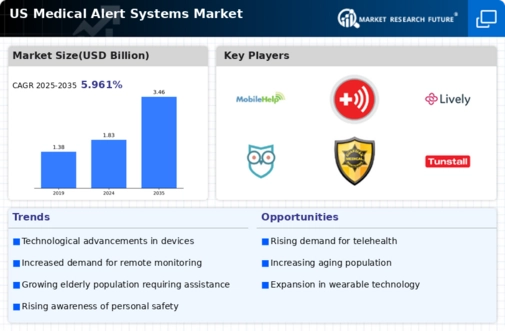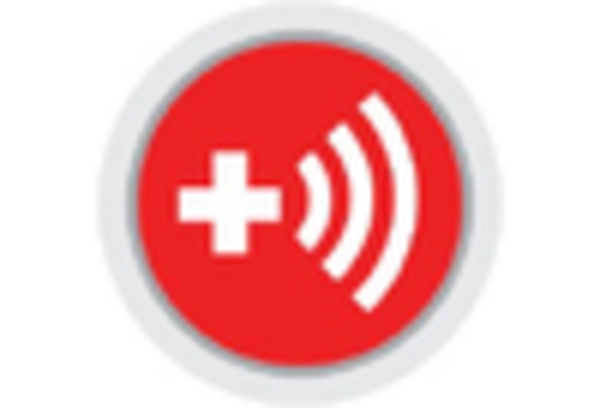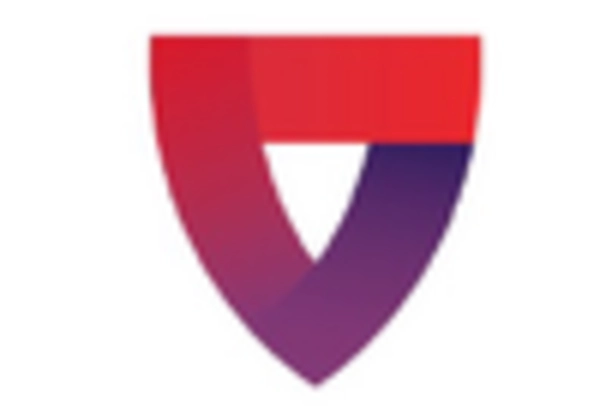Rising Healthcare Costs
Rising healthcare costs in the United States are driving the demand for medical alert systems. As individuals seek to manage their health more proactively, the need for affordable solutions that can prevent costly hospital visits becomes increasingly apparent. Medical alert systems provide a means for seniors and individuals with chronic conditions to receive immediate assistance, potentially reducing the need for emergency care. The average cost of a hospital stay can exceed $10,000, making preventive measures like medical alert systems an attractive option for many families. This economic pressure encourages consumers to invest in technologies that promote safety and independence, thereby expanding the medical alert-systems market. Companies are likely to respond by offering competitive pricing and flexible subscription models to attract a broader customer base.
Aging Population Demographics
The aging population in the United States is a primary driver for the medical alert-systems market. As the baby boomer generation continues to age, the demand for solutions that enhance safety and independence among seniors is increasing. By 2030, it is projected that 20% of the U.S. population will be 65 years or older, creating a substantial market for medical alert systems. This demographic shift necessitates innovative technologies that cater to the unique needs of older adults, including ease of use and reliability. Furthermore, the growing awareness of health issues among seniors has led to a heightened interest in preventive measures, thereby propelling the medical alert-systems market forward. Companies are likely to focus on developing user-friendly devices that can seamlessly integrate into the daily lives of older adults, ensuring they remain connected and safe.
Increased Awareness of Personal Safety
Increased awareness of personal safety among consumers is a notable driver of the medical alert-systems market. As individuals become more conscious of the risks associated with aging and health conditions, there is a growing demand for solutions that provide reassurance and security. Educational campaigns and community programs have played a crucial role in informing the public about the benefits of medical alert systems. Surveys indicate that nearly 70% of seniors express a desire to remain in their homes as they age, highlighting the importance of safety technologies. This heightened awareness is likely to lead to increased adoption rates of medical alert systems, as families seek to ensure the well-being of their loved ones. Consequently, manufacturers may focus on marketing strategies that emphasize the life-saving potential of their products, further driving growth in the medical alert-systems market.
Regulatory Support for Health Technologies
Regulatory support for health technologies is emerging as a significant driver for the medical alert-systems market. Government initiatives aimed at promoting the adoption of innovative healthcare solutions are likely to create a favorable environment for market growth. For instance, the Centers for Medicare & Medicaid Services (CMS) has been exploring ways to reimburse telehealth services, which may extend to medical alert systems in the future. Such policies could incentivize consumers to invest in these technologies, knowing that they may receive financial support. Additionally, regulatory bodies are increasingly recognizing the importance of safety and efficacy in health technologies, which could lead to streamlined approval processes for new products. This supportive regulatory landscape may encourage more companies to enter the medical alert-systems market, fostering competition and innovation.
Technological Advancements in Communication
Technological advancements in communication are significantly influencing the medical alert-systems market. The proliferation of mobile technology and the Internet of Things (IoT) has enabled the development of more sophisticated alert systems that offer real-time monitoring and communication capabilities. For instance, many modern medical alert devices now feature two-way communication, GPS tracking, and fall detection, which enhance user safety and peace of mind. According to industry estimates, the market for connected medical devices is expected to grow at a CAGR of approximately 25% over the next five years. This rapid growth indicates a strong consumer preference for advanced technology in personal safety solutions. As a result, manufacturers are likely to invest heavily in research and development to create innovative products that meet the evolving needs of consumers in the medical alert-systems market.

















Leave a Comment